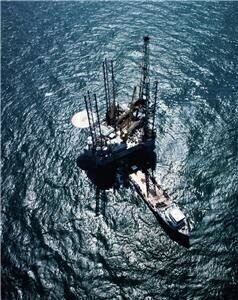Fuel for Thought
New ASTM Crude Oil Sampling Standard Helps Shippers, Labs, and Others
Jan 28 2016
A new ASTM International standard will help shippers, laboratories, regulators and others who need to safely take samples of volatile crude oils in transit.
According to ASTM member David Murray, the introduction of a new sampling tool – the manual piston cylinder – has allowed for more sampling of live crude oils and crude-condensate mixtures, which are too volatile to sample using conventional containers. The manual piston cylinder allows for sampling at low-pressure points and in sealed environments.
“The most important aspect of the new standard is the ability to capture live crude oil and condensate samples in sealed containers, which minimises the potential for loss of components during sampling, handling and transport to the laboratory for testing,” says Murray, the principle consultant at Omnicon Consultants Inc. “This minimises the risk of test results being biased by the sampling method used, thereby providing results that are representative of the source material.”
“Considering the high volume of crude oil, condensate and diluent now transported by rail, truck, pipeline and ship, this standard will be very helpful,” he says.
The new standard (D8009, Practice for Manual Piston Cylinder Sampling for Volatile Crude Oils, Condensates and Liquid Petroleum Products) is under the joint jurisdiction of ASTM International Committee D02 on Petroleum Products, Liquid Fuels and Lubricants, and the American Petroleum Institute’s Committee on Petroleum Management.
The new standard was developed in concert with two other new ASTM standards: Test Method for Determination of Vapor Pressure of Crude Oil: VPCRx-F(Tm°C) (Manual Expansion Field Method) (D7975); and Test Method for Determination of Light Hydrocarbons and Cut Point Intervals in Live Crude Oils and Condensates by Gas Chromatography (D8003).
Murray says that the three standards help close measurement gaps between testing in the field, sampling and analysis. D7975 allows onsite field vapour pressure measurement, which may prompt sampling via D8009 to allow transport to the laboratory to verify the field measurement by a previously approved standard (D6377, Test Method for Determination of Vapor Pressure of Crude Oil: VPCRx (Expansion Method) while D8003 can be used to perform compositional analysis to identify the specific component(s) causing the high vapour pressure.
Digital Edition
PIN 25.1 Feb/March
March 2024
In This Edition Safety - The technology behind the ION Science Tiger XT - Safety with ammonia and LOHCs as hydrogen carriers Analytical Instrumentation - Discussion on new tribology te...
View all digital editions
Events
Apr 24 2024 Mumbai, India
Apr 24 2024 Jakarta, Indonesia
Apr 28 2024 Montreal, Quebec, Canada
Apr 30 2024 Birmingham, UK
May 03 2024 Seoul, South Korea


















